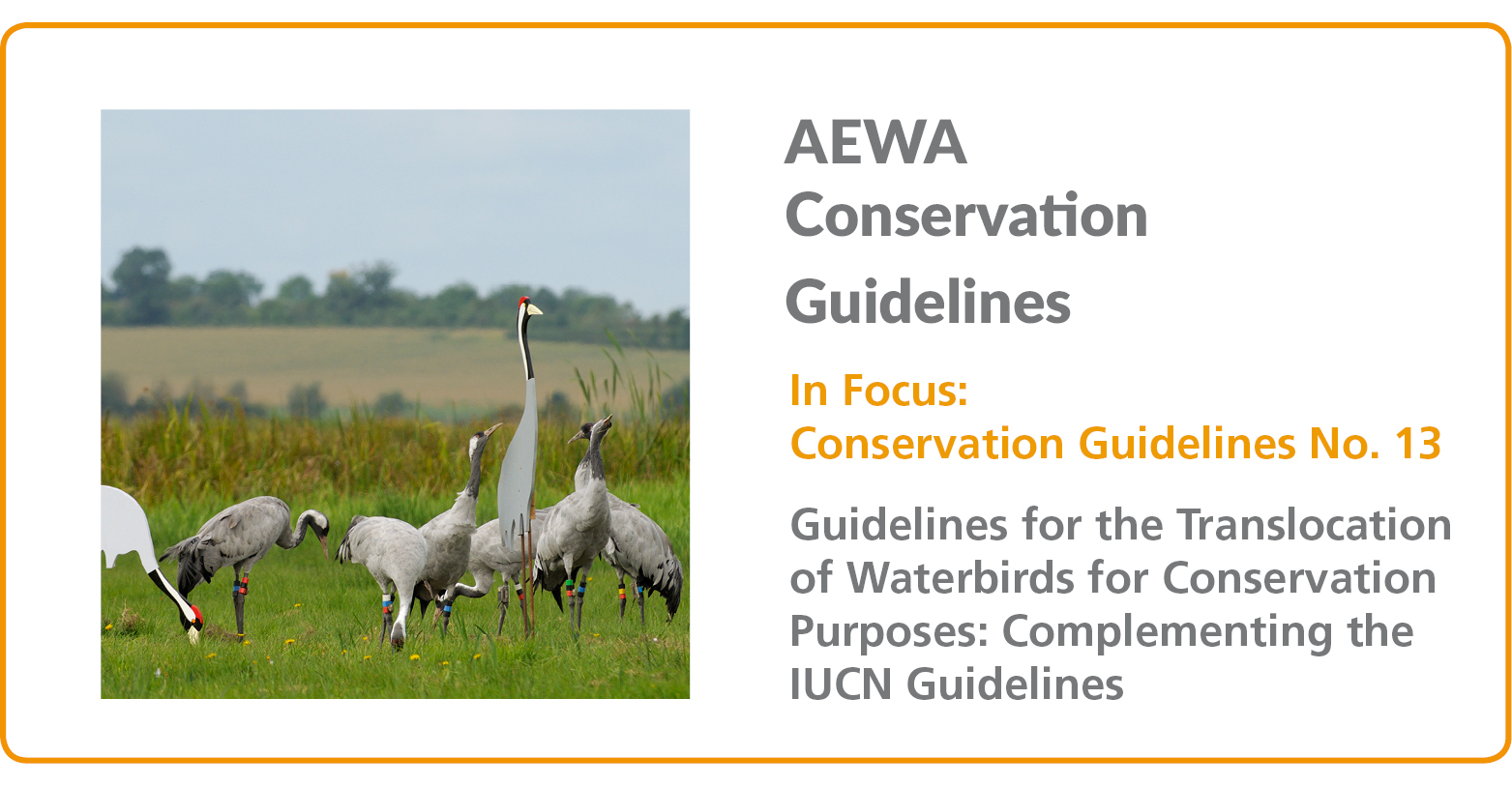In Focus: AEWA Conservation Guidelines No. 13 - Guidelines for the Translocation of Waterbirds for Conservation Purposes: Complementing the IUCN Guidelines

Eurasian Cranes (Grus grus) released in the United Kingdom © Nick Upton
Bonn, 2 April 2019 - The AEWA Action Plan requires the Secretariat and the Technical Committee (TC) to develop a series of Conservation Guidelines to help the Parties implement the Agreement. As part of this series, guidelines on the translocation for conservation purposes have been produced based on the key finding of the AEWA International Review of Waterbird Re-Establishment (2008) to supplement those prepared by the IUCN.
Mandated by AEWA MOP Resolution 4.4, the TC contracted the task of developing supplementary guidance to the Wildfowl and Wetlands Trust in 2011. The Guidelines for the Translocation of Waterbirds for Conservation Purposes: Complementing the IUCN Guidelines were endorsed by the 7th Meeting of the AEWA Standing Committee in April 2012 and approved by the 5th Session of the Meeting of the Parties (May 2012, La Rochelle, France).
Translocation has received increased attention as a conservation tool over the last two decades resulting in an increase in such projects worldwide aiming to re-establish extinct or depleted wild populations (IUCN 1998). The AEWA guidelines have been developed to set out principles for the translocation of waterbirds for conservation purposes, expanding on the generic advice provided by the IUCN Guidelines for Re-introductions (IUCN 1998). They also include information on how to determine the aims and objectives of a translocation, assessing the justification for and feasibility of such actions, the planning process, project implementation, evaluating success and reporting outcomes.
As a result of all the problems encountered (difficulty in establishing self-sustaining populations, failed release attempts, high costs etc.), translocation projects should only be conducted as part of wider conservation initiatives and in the realization that such projects will almost certainly be of long duration and expensive. Without being part of a wider conservation programme, it is very unlikely that there will be any long-term positive outcomes for the target species.
Before the planning and implementation stages, it is essential to undertake a justification assessment to determine whether the project is needed and appropriate, and the outcomes of such assessments should be agreed by the relevant stakeholders and authorities at the appropriate levels. If a project is considered justified, a comprehensive feasibility assessment should be conducted to determine whether the project has a reasonable chance of success based on the knowledge, skills, attitudes and resources available.
A translocation project is not over when the birds are released – a range of post facto activities is required, including interventions as necessary, monitoring, assessment of outcomes and evaluation of success, and reporting.
Lessons learned from all the stages and activities in a translocation project should be carefully assessed and used to develop and improve on project plans and techniques. Lessons learned should be shared as widely as possible to inform future translocations of the target species and related species as well as the conservation community as a whole.
The Guidelines, published as AEWA Technical Series No. 49, were produced by the Wildfowl & Wetlands Trust (WWT) and funded by the Federal Office of the Environment (FOEN) of the Swiss Confederation.
Last updated on 08 April 2019


